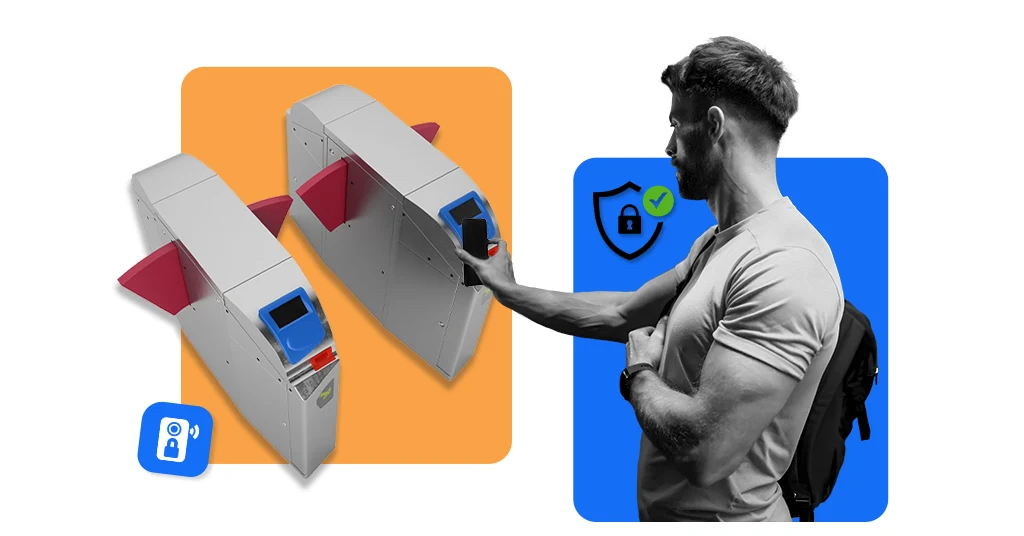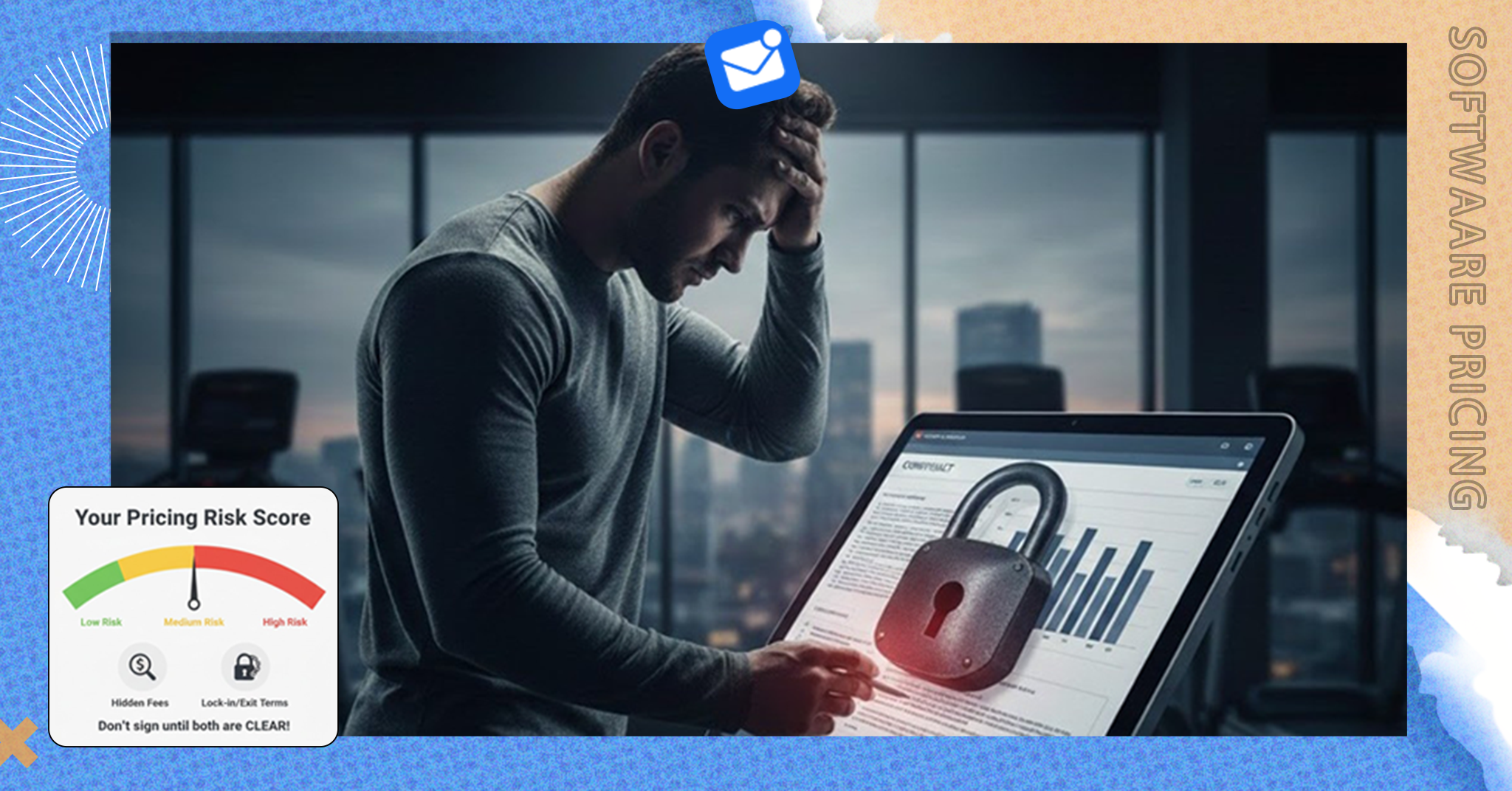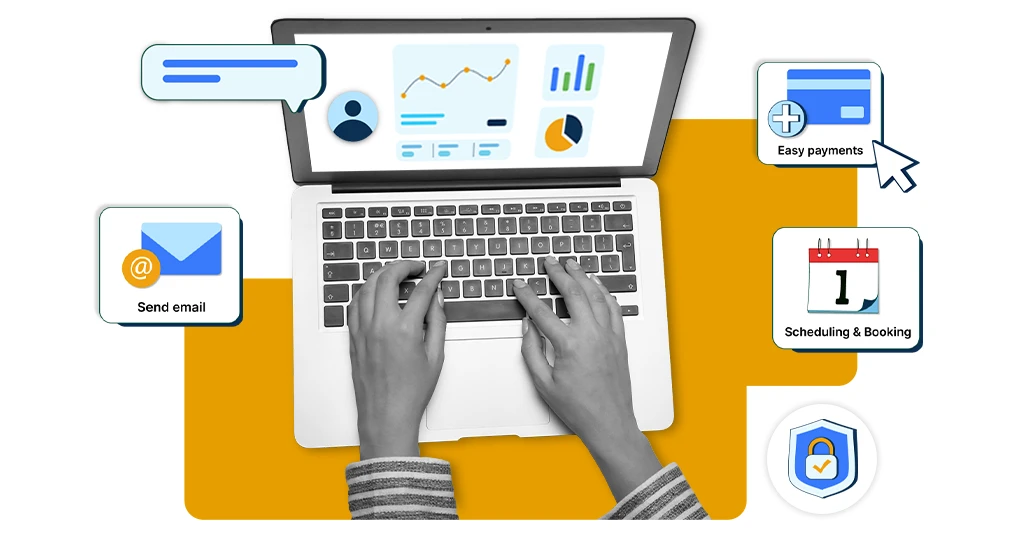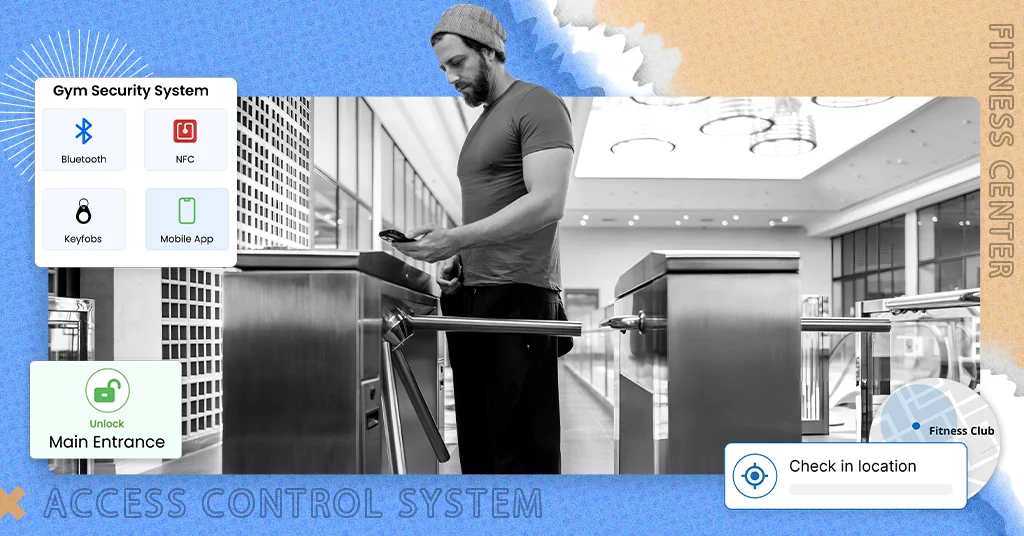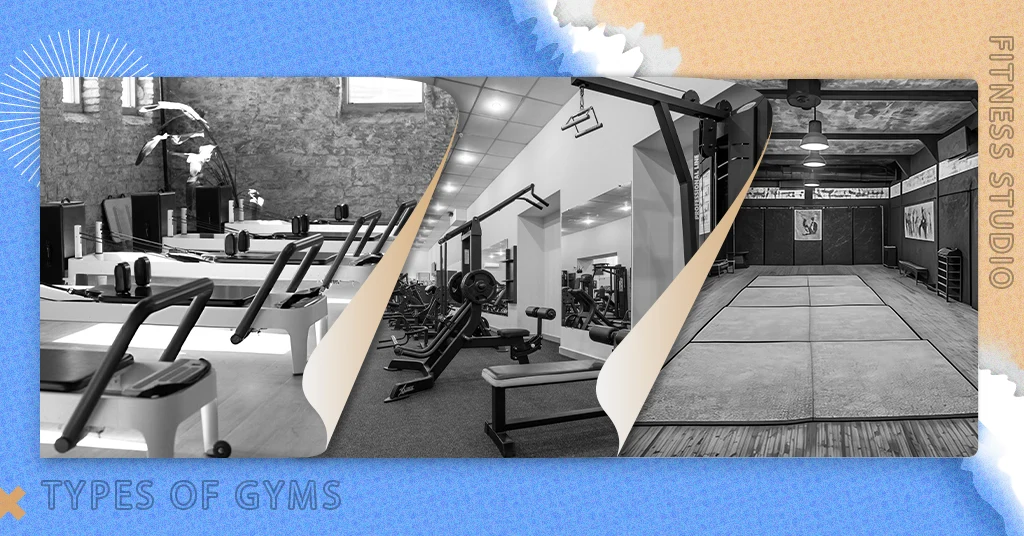Close your eyes for a moment and picture your gym. The weights are shining, the treadmills are running, the music is pumping. Members are sweating, smiling, and feeling proud. Now ask yourself:
“Is my gym safe and smooth behind the scenes?”
Do you know who walks through your doors every day? Can strangers enter without anyone noticing? Are expired members still using your gym for free? Are you tied down by a front desk that eats time and money?
If you felt even a tiny “yes” in your heart, then this guide is for you.
Because here’s the truth: your gym’s success doesn’t depend only on heavy dumbbells or fancy machines. It depends on trust, safety, and convenience.
When members feel safe and welcome, they stay longer. When your operations run smoothly, you save time and money. And when you offer easy 24/7 access, your gym becomes the one people talk about and love.
That’s what a gym access control does. It is like your gym’s smart security guard that works all day and night, never sleeps, never gets tired, and never makes a mistake.
In this guide, we’ll break down everything you need to know about:
- What is a gym access control system?
- Why every gym owner needs one.
- The different types of systems and how they work.
- Key features you should look for.
- Benefits for owners, members, and staff.
- How to choose the right system for your gym.
- Costs and ROI.
- Best practices for installation.
- Future trends you need to know.
This isn’t just about technology. It’s about keeping your members happy, your gym safe, and your business growing for years to come. Ready?
Let’s dive in.
Why gym owners need to care about access control systems
Before we get into the details, let’s answer the big question: why does this matter to you?
Gyms face theft, vandalism, and unauthorized access more than most businesses. People often assume gyms are low-risk, but think about it: your gym is filled with expensive machines, lockers full of personal belongings, and sometimes even cash at the counter. One security slip can cost thousands, and even worse, it can damage your reputation.
According to reports, 47% of gyms report at least one security incident every year, usually unauthorized access or theft. That’s almost one in two gyms.
The good news? Gyms that invest in access control systems reduce operational costs by up to 30%. These systems do more than protect your space; they make your business lean, efficient, and member-friendly.
Your gym is like a 24/7 convenience store, but bigger and riskier. You can’t have someone standing at the door all day and night. But with a smart access system, you can control everything, doors, lockers, payments, and even attendance, from your phone.
What is an access control system for gyms?
An access control system is like a smart doorman for your gym. It decides who enters, when they enter, and for how long.
But it doesn’t stop there. A modern access control system also manages memberships, tracks attendance, and automates security, so you can focus on growing your business instead of babysitting the front desk.
Key components of gym access control
Here are the key components that you need to know for gym access control:
- Authentication methods
Authentication is the way your system confirms who the member is. There are multiple options:
- RFID cards: Members swipe or tap a card to enter.
- Key fobs: A small device attached to a keychain for quick success.
- Mobile apps: Members use QR codes or NFC on their phones to unlock the door.
- Biometrics: Fingerprint or facial recognition for maximum security.
Each method has pros and cons, but biometrics and mobile apps are quickly becoming the gold standard because they eliminate card sharing and lost keys.
- Access points
Access control isn’t limited to the main entrance. You can secure multiple areas, including:
- Studios for yoga or spin classes.
- Locker rooms for privacy and safety.
- Premium zones for VIP members or personal training.
This gives you full control over who uses which facility, reducing unauthorized access to special areas.
- Software integration
The system should integrate with your gym management software. Why? Because this allows:
- Automatic membership validation.
- Real-time updates on payments and renewals.
- Attendance tracking and usage reports.
If your system works separately from your gym software, you’ll end up doing double the work. Integration ensures a single dashboard for everything.
- Hardware
This is the physical setup that makes it all work:
- Turnstiles to regulate entry.
- Smart locks on doors and lockers.
- Card leaders and biometric scanners for verification.
- Cameras for an extra layer of monitoring.
Pro tip: Always pick a system that integrates with your existing gym software. This avoids extra work and ensures a smooth user experience for your members.
What are the benefits of access control for gyms
Access control isn’t just a security upgrade. It’s a business strategy. Let’s explore the benefits in detail:
- Enhanced security
Gyms are full of expensive equipment and personal items. A single break-in can cost thousands and ruin member trust. Access control eliminates this risk by logging every entry and exit. If someone doesn’t have an active membership, they can’t enter, simple as that.
Gyms with smart access systems report 65% fewer theft incidents compared to those using manual check-ins.
- 24/7 unmanned operations
Today’s members want flexibility. Many prefer working out late at night or early in the morning. But staffing a gym 24/7 is expensive and stressful. Access control systems make round-the-clock operations possible without extra staff. Members can walk in at 2 am, and you can sleep peacefully knowing your gym is secure.
Example: Planet Fitness uses keycard-based access for its 24-hour facilities, saving millions annually on staffing costs.
- Seamless member experience
No one likes waiting in line at the front desk. Automated access means members walk in, tap, and start working out, just like that. It makes your gym feel modern and premium, which improves satisfaction and retention.
Gyms with automated access report 22% higher member satisfaction.
- Better membership control
Your access control system knows everything about your members in real time.
- Who is active?
- Who missed a payment?
- Who is on freeze?
If someone’s payment is overdue, the system automatically denies access, no awkward conversation for your staff.
- Data-driven decisions
Every scan generates valuable data. You can see:
- Peak hours for better staff scheduling.
- Which areas get the most traffic?
- Trends for adding new classes or equipment.
Pro Tip: Use data for personalized offers. If someone always checks in at 6 am, offer them a discount on early-morning classes.
How many types of access control systems for gyms are available?
There are 4 types of access control systems for gyms.
- Keycard or fob systems
These are traditional options where members carry a card or small fob to tap at entry points. They’re affordable and simple to use, but if a card is lost, it can be a security risk.
Pros:
- Affordable and easy to replace.
- Works for small to medium gyms.
- Familiar technology (members already understand it)
Cons:
- Cards can be lost or shared.
- Less secure compared to advanced options.
Best for: Small gyms or community fitness centers looking for a simple solution.
- Mobile app access
Members use their phone to scan a QR code or tap via NFC. It’s convenient, secure, and eliminates lost cards. Perfect for tech-friendly gyms.
Pros:
- Convenient (everyone has a phone).
- Reduces the cost of physical cards.
- Can be integrated with gym apps for booking and payments.
Cons:
- Requires members to have smartphones(which is almost everyone, but still…).
- Needs strong app support.
Best for: Modern gyms that want a tech-forward experience and smoother member onboarding.
- Biometric access
Fingerprint or facial recognition provides the highest level of security. It’s impossible to share credentials, and it gives members a premium experience.
Pros:
- Extremely secure.
- Eliminates card sharing completely.
- No risk of losing keys or phones.
Cons:
- Higher initial cost.
- Privacy concerns for some members.
- Requires backup for system downtime.
Best for: Premium gyms, boutique fitness centers, or 24/7 gyms that need tight security.
- PIN or keypad entry
Members enter a code to access the gym. While cheap, it’s not very secure because codes can be shared.
Pros:
- Easy to implement.
- No physical key needed.
- Affordable.
Cons:
- Members can share codes.
- Keypads need to be sanitized regularly.
Best for: Budget gyms and smaller setups where cost-effectiveness is key.
Pro tip: A combination of biometric and mobile access is the future of gym security.
- Turnstiles & speed gates
For gyms with high foot traffic, turnstiles control entry in a more structured way. Combine them with key cards, biometrics, or QR codes for maximum security.
Pros:
- Great for crowd management.
- High security when integrated with other systems.
Cons:
- Expensive and needs space.
- It can feel intimidating for members.
Best for: Large gyms, fitness clubs, and chains with multiple entry points.
How to choose the right access control system for your gym
With so many options, how do you choose the best one? Here’s the checklist to make it easier:
Step 1: Know your budget
Are you a small studio or a luxury gym? Cost varies, from $500 for basic setup to $10,000+ for advanced biometric systems. Set your limit before exploring.
Step 2: Understand your member base
Do your members prefer tech-driven solutions like mobile apps? Or are they fine with keycards? Member convenience should guide your decisions.
Step 3: Consider your gym’s size and layout
Bug gyms need more sophisticated solutions like turnstiles or integrated biometric scanners, while smaller gyms can do well with key cards.
Step 4: Integration with existing software
Does your gym use management software? Make sure the access control system syncs with it for seamless check-ins, billing, and attendance tracking.
Step 5: Future-proof your investment
Pick a system that can scale with your business. If you plan to add multiple locations or offer 24/7 access, choose a system that grows with you.
What are the different steps of installation & integration of an access control system
Installing access control might sound overwhelming, but it doesn’t have to be. Here’s a simplified process:
Step 1: Site assessment
Work with your vendor to inspect entry points and decide where to place scanners, readers, or turnstiles.
Step 2: Choose the hardware
Based on your tech selection, key card readers, biometric scanners, or mobile access hubs, pick the hardware that fits your layout.
Step 3: Software setup
Install the management software that syncs with your access control system. This helps automate check-ins, payments, and reporting.
Step 4: Testing & staff training
Before you go live, run tests. Train your staff to handle exceptions.
Step 5: Go live & monitor
Launch the system and keep an eye on performance for the first few weeks. Make tweaks based on member feedback.
Also Read: A Detailed Guide To Installing Your Gym Access Control System
How can you ensure access control maintenance & troubleshooting
A great system is only as good as its maintenance. Here’s how to keep yours running smoothly:
- Regular software updates: Always stay on the latest version for security.
- Clean hardware: Wipe down keypads, scanners, and turnstiles regularly.
- Backup plans: Have manual entry options in case of power failure or system downtime.
- Monitor logs: Review access logs for unusual activity.
Common issues & fixes:
- Cards not working? Reset permissions or issue a new one.
- App Glitches? Update the app or re-sync the system.
- Biometric failure? Re-scan fingerprints or use alternative access.
Real-life examples, gyms that got it right
Let’s look at gyms that implemented access control like pros.
Case study 1: Small studio in London
- Problem: Unauthorized access during off-hours.
- Solution: Installed mobile access control integrated with their gym software.
- Result: Zero unauthorized entries in 6 months, improved member satisfaction.
Case study 2: 24/7 gym in New York
- Problem: Staff overhead for late-night shifts.
- Solution: Switched to biometric scanners for all doors.
- Result: Reduced labor costs by 30%, improved security.
Case study 3: Large fitness chain
- Problem: Long queues during peak hours.
- Solution: Added turnstiles with QR code entry.
- Result: 50% faster check-ins, happier members.
Cost breakdown. Is it worth it?
Here’s a cost breakdown for implementing an access control system in your gym:
- Basic keycard system: $500-$1500
- Mobile access setup: $1500-$3000
- Biometric system: $4000-$10000+
- Turnstiles & gates: $5000-$15000
ROI tip: Think of access control as an investment in member experience and retention, not just security.
What is the future of gym access control
The future is exciting. Here’s what’s coming:
- AI-powered access: Predictive analytics for better security.
- Touchless entry: Facial recognition and voice control.
- Integration with wearables: Smartwatches doubling as gym keys.
As fitness tech evolves, access control will move beyond security; it’ll be about creating a frictionless, personalized experience.
Final Thoughts
Access control isn’t just a security upgrade; it’s a business strategy. It makes your gym safer, smarter, and member-friendly. It saves money, boosts retention, and prepares you for the future.
Stat to remember: Gyms with smart access control see 30% higher efficiency and 22% more satisfied members within the first year.
If you want to make your gym future-proof, access control is where it starts.
Ready to make your gym safer, smarter, and stress-free?
Stop worrying about security and manual check-ins. With GymRoute’s smart access system, you get:
- 24/7 secure access for your members.
- Integrated gym management software.
- Easy setup with zero headaches.
- Automated billing and membership control.
- Data insights to grow your business.
Take the first step toward a future-ready gym today.
Book a Free Demo with GymRoute now and see how we can make your gym secure, efficient, and loved by your members.
